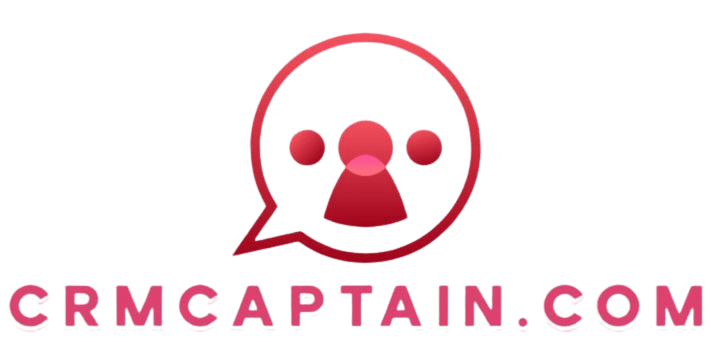How to Integrate CRM with Other Tools?
In today’s fast-paced business landscape, managing customer relationships effectively is essential for success. CRM integration plays a pivotal role in making your work easier and enhancing data management by connecting various tools and platforms seamlessly.
This article will explore what CRM integration is and why it matters. We will highlight its benefits and the different types available. From popular integration tools to a step-by-step guide on implementing them, you ll also find insights into common challenges and their solutions.
Dive in to uncover how integrating CRM with your existing tools can transform your business operations and elevate your performance!
Contents
- Key Takeaways:
- Understanding CRM Integration
- Why You Need to Integrate Your CRM Now!
- Types of CRM Integration
- Top Tools to Supercharge Your CRM Integration!
- Steps to Integrate CRM with Other Tools
- Common Challenges and Solutions
- Preguntas Frecuentes
- Qu es la integraci n de CRM y por qu es importante?
- C mo determino qu herramientas integrar con mi CRM?
- Puedo integrar mi CRM con m ltiples herramientas?
- Es necesario contratar a un profesional para la integraci n de CRM?
- Cu les son algunos desaf os comunes al integrar CRM con otras herramientas?
- Cu les son algunas mejores pr cticas para integrar CRM con otras herramientas?
Key Takeaways:

Integrating CRM with other tools enhances efficiency and data management, as detailed in our guide on integrating CRM with existing systems, improving business processes and customer experience.
There are two types of integration: one-way and two-way, each with unique benefits and limitations. Choose the best option based on your business needs.
Follow a step-by-step guide and be prepared to tackle common challenges to successfully integrate CRM with other tools and optimize its functionality.
Understanding CRM Integration
CRM integration involves connecting your customer relationship management system with various tools and applications, like HubSpot and Shopify, to streamline business processes and enhance data accuracy.
In today s competitive landscape, effective CRM integration boosts efficiency. It allows you to harness valuable customer insights and manage relationships more effectively, driving business growth.
Prioritizing this integration positions your business to thrive in an ever-evolving market.
Definition and Importance
CRM integration connects your customer relationship management systems with other software tools, ensuring your data remains accurate across various platforms. Learning how to integrate your CRM with accounting software is vital for streamlining operations and enhancing customer interactions.
By synchronizing data from email marketing, e-commerce, and customer service applications, you can keep your customer profiles fresh and ready for action! This not only supports better decision-making but also enables you to craft personalized marketing strategies.
For example, leveraging cloud applications such as Salesforce alongside Slack significantly improves communication among teams while ensuring customer data stays accurate and easily accessible. This helps nurture customer relationships more effectively, ultimately boosting satisfaction and loyalty.
Why You Need to Integrate Your CRM Now!
Integrating your CRM with other tools offers a wealth of benefits. You’ll experience enhanced collaboration among teams, improved workflow efficiency, richer customer experiences, and increased sales opportunities through CRM software integrations.
This approach isn t just a nice-to-have; it s a crucial strategy for thriving in today s competitive business landscape.
Enhanced Efficiency and Data Management
Enhanced efficiency and data management through CRM integration enable you to streamline workflow automation while maintaining high performance metrics and data validation across platforms.
With this integration, you can cut down on mistakes and avoid unnecessary repetition by automating routine tasks. This frees up valuable time for your team to focus on more strategic initiatives.
By utilizing robust performance metrics, you can easily monitor operations and pinpoint areas for improvement, leading to well-considered choices.
Data validation ensures accuracy and consistency of information across systems, bolstering overall data integrity.
These improvements boost productivity and cultivate a collaborative environment where data-driven insights can propel success.
Types of CRM Integration

You have an array of CRM integration options at your disposal, primarily divided into one-way integration and two-way integration. One-way integration allows data to flow in one direction, while two-way integration enables data to flow back and forth.
Both methods synchronize data to elevate communication and functionality with third-party applications, ensuring your business operates seamlessly in today s tech-driven landscape.
One-Way vs. Two-Way Integration
One-way integration allows data to flow in a single direction. In contrast, two-way integration creates seamless connectivity, enabling dynamic data exchange and updates between systems. This is often achieved through connecting different software systems and middleware solutions.
This distinction can significantly shape how you manage your data processes. In a one-way scenario, information transfers from a source to a destination without any feedback. This can result in data silos and outdated information if not diligently monitored.
On the other hand, two-way integration fosters a real-time feedback loop. This keeps both systems synchronized and ensures that you always have access to the most current data.
Connecting different software systems is key to this fluid communication, acting as a bridge that allows various platforms to interact efficiently. Meanwhile, middleware solutions enhance connectivity by providing a common interface for managing data flow and ensuring compatibility, driving effective business operations.
Top Tools to Supercharge Your CRM Integration!
Explore powerful tools that can transform your CRM integration journey! Platforms such as HubSpot, Shopify, and Zapier can significantly enhance your workflows. To learn more about effectively combining these tools with your CRM, check out this guide on how to integrate your CRM with social media. They enable you to manage customer data across different applications with ease and precision.
These tools not only streamline your processes but also elevate your overall customer relationship management strategy.
Overview and Comparison
Reviewing popular CRM tools like HubSpot and Shopify shows their unique functionalities and benefits for managing customer relationships and analytics. By diving into these platforms, you can truly appreciate how their distinctive features cater to various business needs.
HubSpot excels in inbound marketing automation, providing extensive tools for lead nurturing and engagement analytics. Shopify stands out with its seamless e-commerce integration, enabling you to efficiently track customer purchasing behavior.
Both platforms harness analytics to enhance performance metrics. They offer insights that drive personalized marketing strategies and improve customer retention. For example, HubSpot allows you to analyze website traffic and visitor behavior, while Shopify equips you with detailed sales insights, facilitating tailored product recommendations and targeted promotions.
Steps to Integrate CRM with Other Tools
Integrating your CRM with other tools requires a meticulous approach. You’ll want to carefully plan for data migration, select suitable integration strategies, and leverage CRM integration tools to ensure a seamless implementation.
This methodical process helps you maximize efficiency and enhance your overall workflow.
Step-by-Step Guide

A step-by-step guide to CRM integration serves as your roadmap for implementing essential processes. This ensures data accuracy and optimizes workflow automation at every stage.
This guide underscores the significance of carefully mapping out your existing processes for a seamless transition. Begin by clearly defining your objectives and aligning the CRM’s capabilities with your business needs.
Next, engage stakeholders from various departments. Their insights will be invaluable in refining the system setup. It s vital to maintain data integrity, so instituting regular audits and validation checks is crucial to eliminate duplicate entries.
Utilizing project management software can significantly enhance your ability to track progress and automate workflows. It organizes tasks, deadlines, and accountability with clarity, ultimately leading to improved efficiency across your teams.
Common Challenges and Solutions
You may encounter several common challenges in CRM integration, such as navigating data silos, ensuring robust data security, and choosing the most effective integration methods.
Addressing these issues is crucial for fully harnessing customer insights and optimizing your operations.
Ready to take your CRM integration to the next level? Start implementing these steps today!
How to Overcome Integration Issues
To overcome integration issues, implement strong data validation processes. Use collaboration tools and automation software to enhance performance and streamline workflows.
These strategies create a seamless operational environment. Validating data at entry reduces errors that disrupt workflows.
Collaboration tools improve communication across departments. They keep everyone aligned and informed, which helps identify and solve integration issues.
Automation software accelerates routine tasks. It also offers real-time insights into your performance metrics for quick adjustments.
Combining these tools drives operational efficiency. Your business can respond quickly to changing demands.
Preguntas Frecuentes
Qu es la integraci n de CRM y por qu es importante?
La integraci n de CRM es el proceso de conectar tu sistema de CRM con otras herramientas y software para mejorar la eficiencia y optimizar procesos. Permite un intercambio fluido de datos y elimina la necesidad de entrada manual de datos. La integraci n es importante porque ayuda a las empresas a ahorrar tiempo y recursos, mejora la precisi n de los datos y realza la experiencia general del cliente.
C mo determino qu herramientas integrar con mi CRM?

El primer paso es identificar las necesidades y objetivos de tu negocio. Piensa en las herramientas y sistemas que usas actualmente y cu les son esenciales para las operaciones de tu negocio. Tambi n deber as considerar la compatibilidad y las capacidades de integraci n de tu CRM. Consulta con tu equipo de TI o proveedor de CRM para recomendaciones sobre qu herramientas ser an m s beneficiosas para integrar.
Puedo integrar mi CRM con m ltiples herramientas?
S, puedes integrar tu CRM con múltiples herramientas. De hecho, integrar con múltiples herramientas puede traer incluso más beneficios, como una visión más holística de los datos del cliente y capacidades de automatización mejoradas. Sin embargo, es importante planificar y priorizar cuidadosamente qué herramientas integrar para asegurar un proceso de integración fluido y eficiente.
Es necesario contratar a un profesional para la integraci n de CRM?
No es necesario contratar a un profesional, pero se recomienda encarecidamente. La integraci n de CRM puede ser compleja y consumir mucho tiempo, especialmente si est s integrando con m ltiples herramientas. Un profesional puede asegurarse de que la integraci n se realice correctamente y de manera eficiente, ahorr ndote tiempo y recursos a largo plazo.
Cu les son algunos desaf os comunes al integrar CRM con otras herramientas?
Algunos desaf os comunes incluyen problemas de compatibilidad, mapeo y formateo de datos, y dificultades t cnicas. Es importante investigar y planificar a fondo estos desaf os de antemano y tener un plan de respaldo en caso de que surjan problemas durante el proceso de integraci n.
Cu les son algunas mejores pr cticas para integrar CRM con otras herramientas?
Algunas mejores pr cticas incluyen tener una comprensi n clara de tus necesidades y objetivos comerciales, investigar y probar exhaustivamente la compatibilidad de las herramientas antes de la integraci n, mapear y formatear adecuadamente los datos, y monitorear y probar regularmente la integraci n para asegurarte de que funcione sin problemas. Tambi n es importante tener un plan de respaldo en caso de que surjan problemas.






